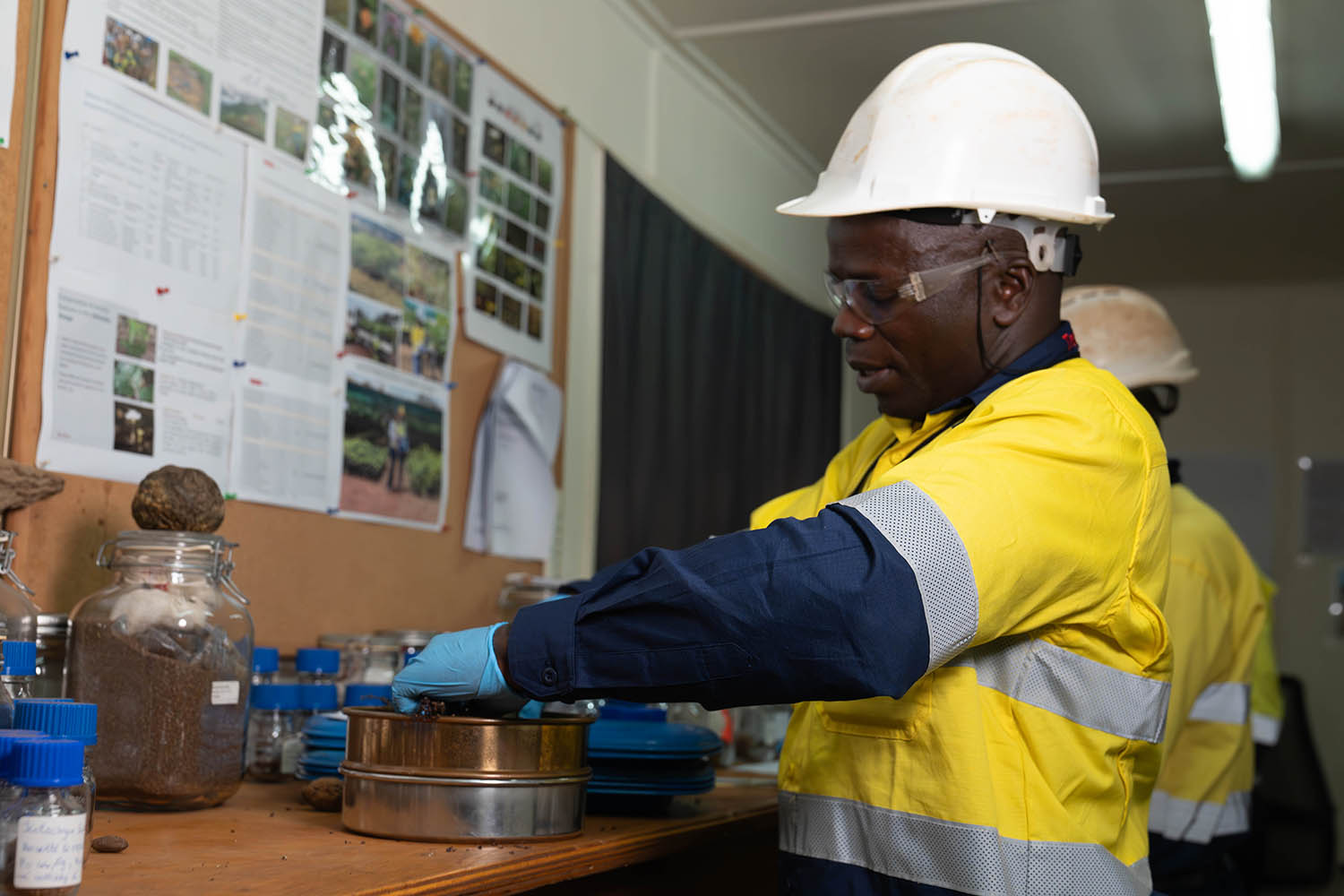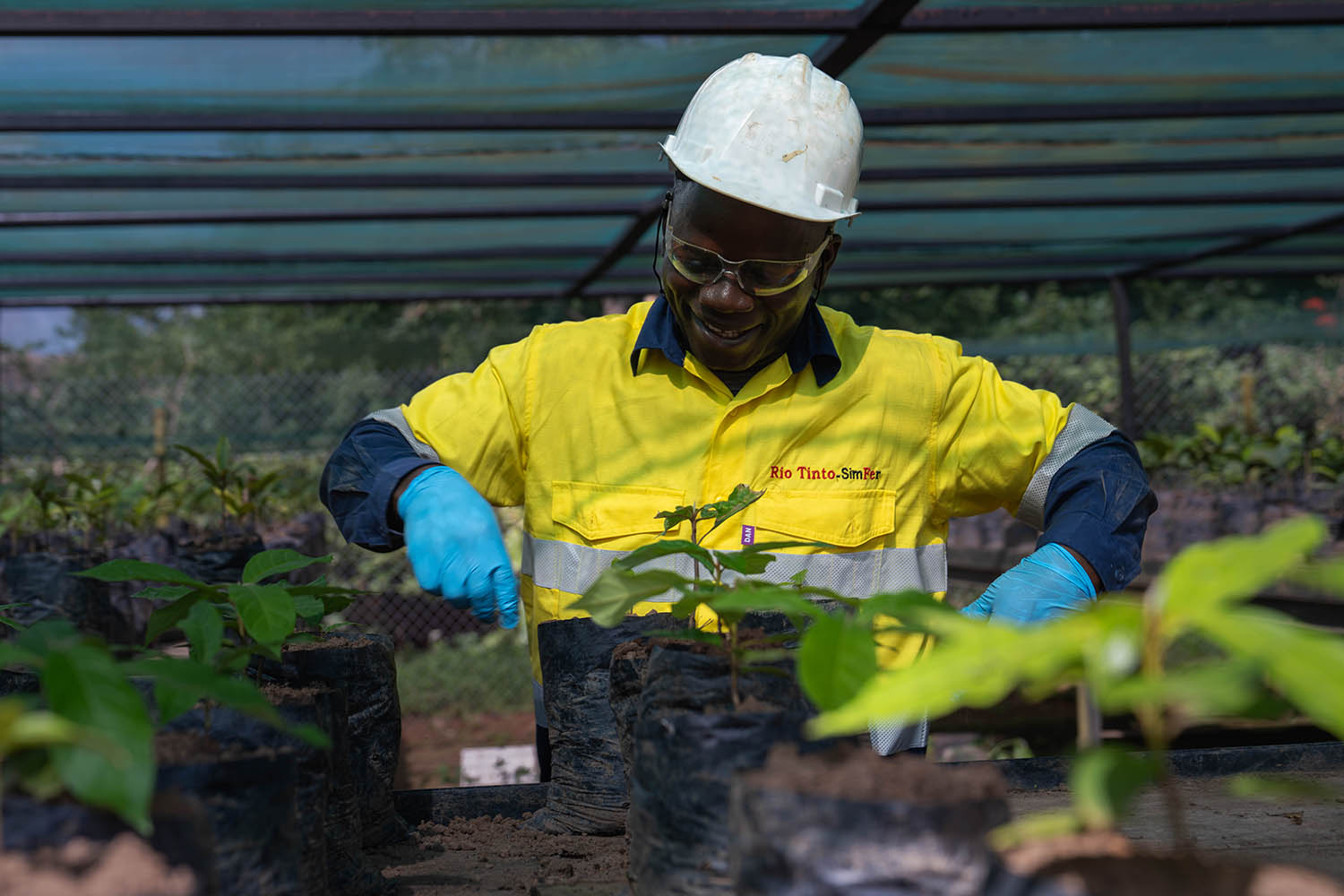Nestled within the rich ecosystems of Guinea’s Pic de Fon Classified Forest, the Simandou mining project is striving to achieve best-practice for biodiversity mitigation and management. For over 12 years, dedicated teams have been working behind the scenes to protect and restore the region’s flora and fauna, ensuring that mining operations leave a positive legacy for future generations.
A Year-Round Mission to Save Seeds
At the heart of Simandou’s conservation efforts is a meticulous seed collection program. Unlike traditional mining projects that focus solely on extraction, Simandou’s teams, including the Biodiversity Botany Team and the Rehabilitation Team work year-round to gather seeds from native plants. The process is carefully timed to match natural cycles, with many species collected during the dry season when their seeds are fully ripe.
Local communities play a vital role in this initiative, particularly in collecting grass seeds used for land rehabilitation. These seeds are later deployed in innovative ways, such as hydroseeding; a technique showcased in recent project visuals where grass seed is sprayed across disturbed landscapes to kickstart growth.

Safeguarding Genetic Diversity for the Future
The seeds collected at Simandou are more than just a backup plan; they are a lifeline for the region’s biodiversity. After being identified and cleaned by expert botanists, the seeds are dried and stored in climate-controlled facilities. To ensure long-term preservation, some of the seeds are sent to the National Seed Bank in Conakry and the Millennium Seed Bank in the United Kingdom, a global conservation initiative.
This dual approach onsite storage and international backup ensures that even in the face of unforeseen challenges, the genetic material of rare and endangered species remains secure. The ultimate goal is to use these seeds for large-scale rehabilitation following mining activities, helping to restore the forest and grassland ecosystems.
Science-Driven Conservation
Simandou’s conservation strategies are rooted in cutting-edge science. Some plant species, for instance, require heat stress to germinate natural adaptation to the region’s fire-prone ecosystems. To replicate these conditions, the project’s nursery team has spent over a decade refining technique to grow these plants in a nursery setting and to be able to then plant them where needed.
Recent discoveries of previously undocumented plant species highlight the project’s role in advancing scientific knowledge. By testing germination methods and sharing findings with global conservation networks, SimFer is contributing to a broader understanding of tropical biodiversity.

A Commitment to Global Sustainability Standards
The biodiversity efforts at Simandou align with Rio Tinto’s global sustainability goals, including commitments to the International Council on Mining and Metals (ICMM). The project adheres to the principle of “no net loss” of biodiversity, ensuring that habitats impacted by mining are either restored or compensated (offset) for elsewhere.
Beyond seeds, the project employs rigorous environmental monitoring programs to track air quality, water systems, and noise levels.
Protecting All Species, Great and Small
While the project’s chimpanzee conservation efforts often make headlines, Simandou is home to 61 species, each requiring tailored protection strategies. Operational boundaries are enforced to prevent unintended disturbances, and ongoing research is shedding light on lesser-known species that call the region home.
Looking ahead, SimFer will continue to utilise long-term biodiversity monitoring locations in undisturbed areas of the mine lease. These areas could serve as hubs for university research, creating opportunities for Guinean scientists and students to study the region’s unique ecosystems.

A Model for Responsible Mining
The Simandou project demonstrates that mining and conservation can go hand in hand. By investing in science, community partnerships, and long-term planning, the project proves that industrial development need not come at the expense of the environment.
“We’re not just here to extract resources; we’re here to protect and restore the environment for generations to come.”
David Hamilton
Senior Manager of Environment & Biodiversity of SimFer